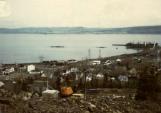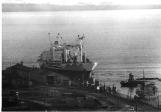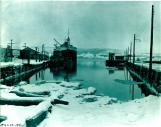1
From the opening of the mill until today, the port has been a vital part of Dalhousie's economic and social structure. Ships still stop to load newsprint for world markets.2
The Philip T. Dodge was an old ship that carried paper from Dalhousie throughout World War II.1939
Dalhousie, New Brunswick, Canada
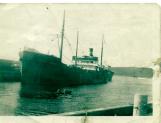
3
Throughout the war years, ships like the aging Phillip T. Dodge carried paper to Europe. Too slow for the convoys, the Dodge somehow survived the dangers of the North Atlantic and the U-boat packs and was sold in Asia after the war. Many local boys served on her, particularly during World War II.4
The 1950s were perhaps the busiest period for the port. Ships were often lined up off Dalhousie waiting for a chance to dock.7
Ships from around the world regularly dock at Dalhousie to load paper.12 January 1955
Dalhousie, New Brunswick, Canada
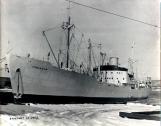
9
The Caslon was one of the ships that routinely called at Dalhousie to load paper.1955
Dalhousie, New Brunswick, Canada
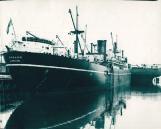
10
Of course, the port wasn't just used by paper boats. Tankers brought in fuel for the mill and for an NB Power thermal generating station that was built in the 1960s. As well, a ferry connected the town with Miguasha, on Quebec's Gaspé Coast. The ferry was popular with local people, allowing them to cross to Miguasha's sandy beaches and those Quebec convenience stores which provided cold beer on a hot day.12
Dalhousie's west wharf was used for shipping of ore concentrate and imports of fuel for the mill.1965
Dalhousie, New Brunswick, Canada
